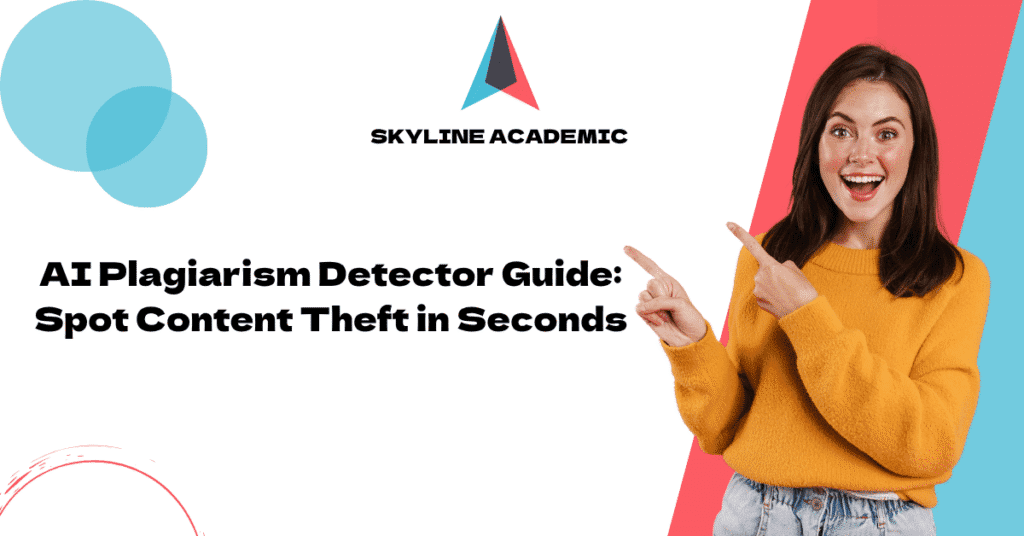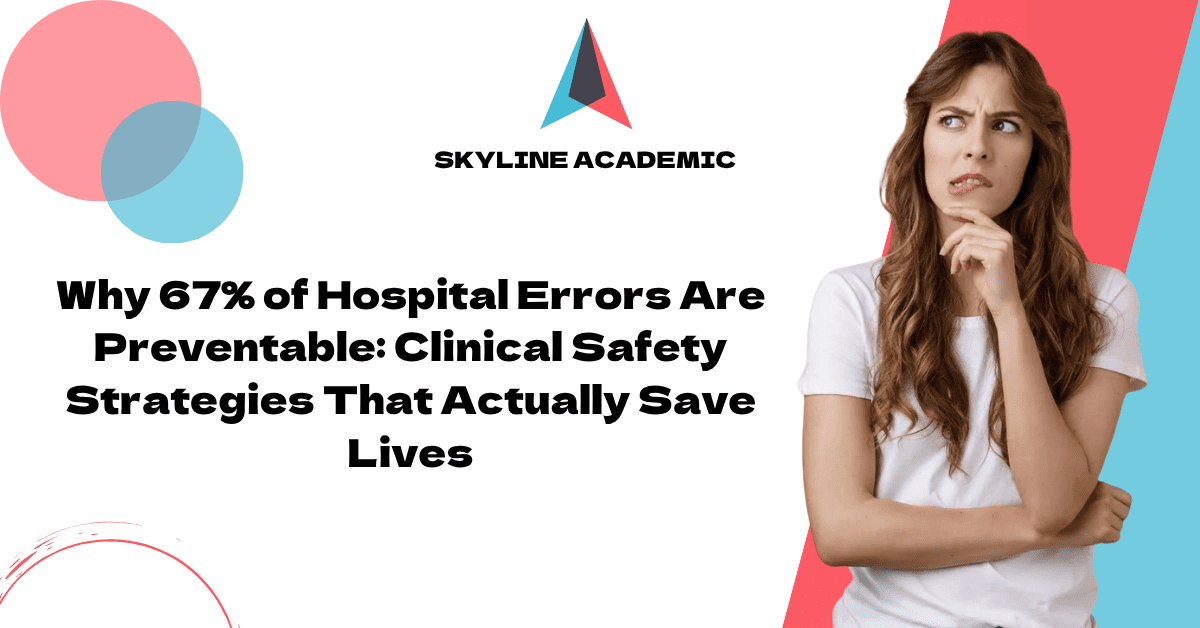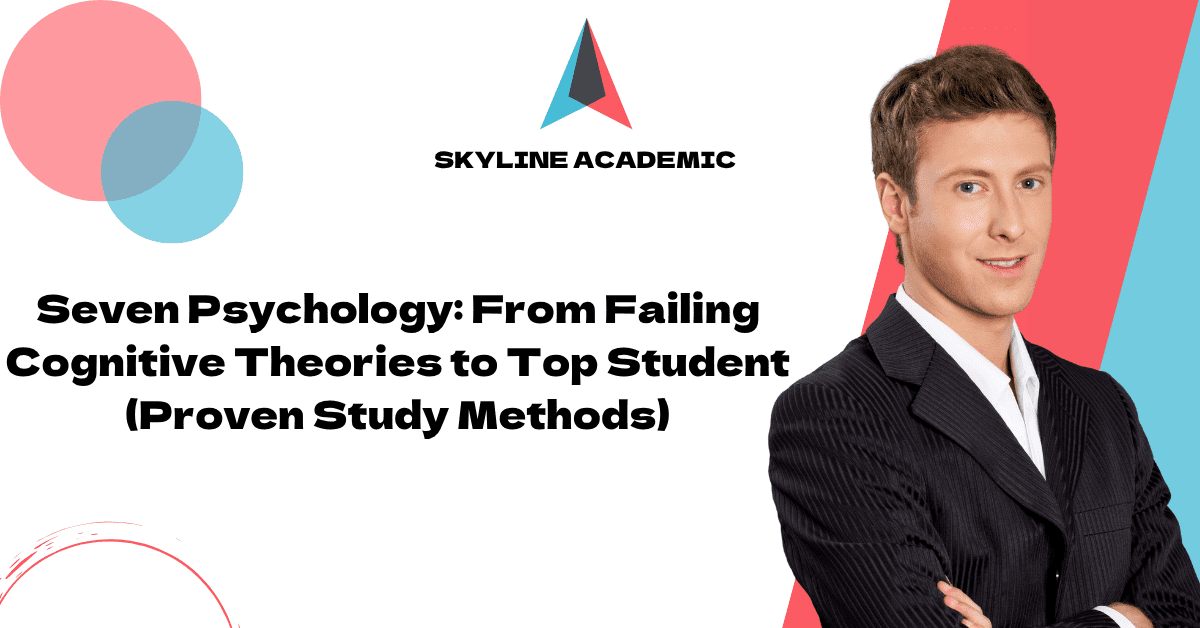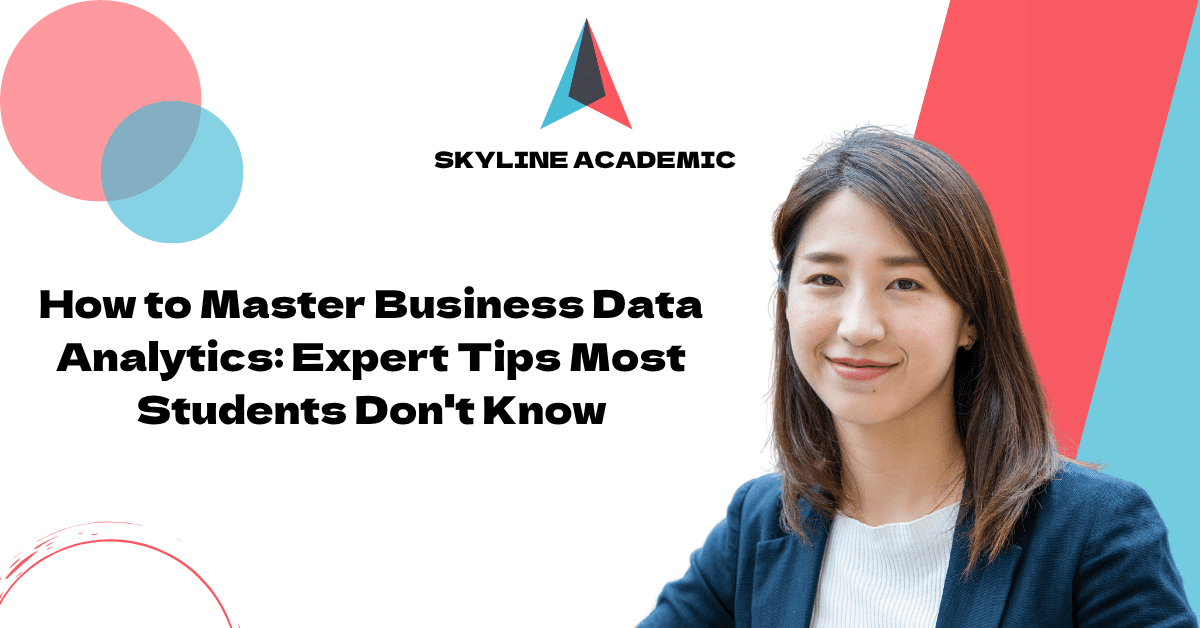AI Plagiarism Detector Guide: Spot Content Theft in Seconds
AI plagiarism detector tools have become crucial as plagiarism reaches alarming levels in our digital world. Research shows that 55% of college presidents believe students’ papers contain more plagiarized content in the last decade. Technology plays a significant role, with 89% pointing to computers and the internet as key factors .
The COVID-19 pandemic made things worse. Students’ non-original work increased from 22.3% to 33.8% during this period . Global plagiarism awareness remains a serious concern. A study of 1,100 undergraduate medical students in Pakistan showed that 87% didn’t understand what plagiarism meant. About 71% admitted they had plagiarized content . Medical graduates and faculty members in Iran faced similar issues – 74% had never received any training to detect or prevent plagiarism .
This piece offers a detailed look at how modern AI-powered tools are transforming plagiarism detection. You’ll learn how these sophisticated systems operate and identify different types of content theft. We’ll also explore the best tools you can use to prevent plagiarism at your work or institution.
Understanding AI and Plagiarism Detection
Sharp-eyed professors and overworked editors no longer need to detect plagiarism alone. AI-powered tools now lead the charge in finding unoriginal content, and they do it faster and better than we’ve seen before.
What is AI plagiarism detection?
AI plagiarism detection uses machine learning algorithms and natural language processing (NLP) to analyze text samples. These tools compare content with billions of documents on the internet and academic databases. The sophisticated systems do more than find exact matches—they understand context, meaning, and structure. Modern AI detectors can spot content created by artificial intelligence tools and catch AI-generated text without proper attribution [1].
These systems recognize patterns and nuances that point to machine-generated or plagiarized work. AI detectors have proven reliable allies in maintaining academic integrity, with accuracy rates of 90% or higher [1].
How AI tools analyze content
AI plagiarism detection tools use several advanced techniques to spot similarities between texts. The process starts by collecting data from multiple sources. The system then cleans and organizes this information [2].
The tools break down text into basic components—words, phrases, and sentences—through natural language processing. They study how these elements connect [2]. The algorithms look at:
- Sentence structure and grammar usage
- Word choice patterns
- Contextual meaning
- Perplexity (how predictable each word is)
- Burstiness (how sentence length and rhythm vary) [3]
Many tools use “fuzzy matching” to catch similar phrases even after rewording or paraphrasing [2]. This makes them substantially better at catching clever attempts to hide plagiarism.
The difference between AI and traditional plagiarism checkers
Traditional plagiarism checkers work quite differently from AI detectors. Both want to protect academic integrity, but their methods and abilities differ:
Traditional checkers match text against existing content databases. They excel at finding exact copies but miss content that’s been cleverly reworded [13, 6].
AI detectors take a different approach by analyzing text characteristics instead of database matching. They look at statistical fingerprints like perplexity and burstiness to spot AI-generated content [3]. These tools can identify reworded plagiarism and AI-generated paraphrasing that standard tools miss [4].
The best solution combines both technologies. AI detection provides speed and efficiency in finding unoriginal content, while human review makes the final call [1]. This integrated method offers complete protection against all types of plagiarism.
Types of Plagiarism AI Can Detect
Image Source: ResearchGate
AI plagiarism detectors can spot many types of content theft that humans might miss. These intelligent systems have sophisticated capabilities that deserve a closer look.
Direct copying
AI detectors shine at catching verbatim plagiarism – the simplest form of academic dishonesty. These tools compare text against billions of online documents, academic databases, and published research papers to find similar matches [5]. Advanced AI algorithms can detect underlying pattern similarities even when words are removed or sentence structure changes. Direct copying has become harder to conceal as AI detection technology grows more sophisticated.
Paraphrasing and patchwriting
AI detection tools can now catch paraphrased content by analyzing sentence structure, grammar usage, and vocabulary patterns [6]. Writers often confuse patchwriting with legitimate paraphrasing. This happens when they make surface-level changes to source material without real rewriting [7]. Writers who swap words with synonyms or shuffle phrases while keeping the original structure create an unacceptable result [8]. Smart AI tools use semantic analysis to recognize these subtle manipulation attempts [9].
Self-plagiarism
Authors who reuse their published work without proper citation commit self-plagiarism [10]. This ethical mistake can damage reputations, trigger academic penalties, and create legal problems [10]. Modern AI detection systems compare submissions against personal repositories to catch authors who recycle their past writings [11].
Translational plagiarism
Smart AI systems detect content translated from other languages to dodge plagiarism checks. Academic cheaters often take foreign-language sources, translate them, and pass off the material as original work [12]. AI tools tackle this problem through cross-language pattern recognition.
Citation manipulation
Some people try to boost their academic status by artificially inflating citation counts. They might buy citations directly, and some services sell “H-index & Citations Booster” packages [13]. Recent research showed how easy this manipulation becomes by uploading AI-generated papers to pre-print servers that plant fake citations [13]. Advanced tools now spot suspicious citation patterns across institutional networks.
Image and data plagiarism
Specialized AI tools like Imagetwin scan visual elements against databases with over 75 million published figures to catch unauthorized image reuse [14]. These systems find duplicated, manipulated, or plagiarized images. Image integrity problems can lead to investigations and paper retractions that get pricey [11]. AI tools also catch data plagiarism by spotting statistical patterns that look too similar across different research papers.
Top AI Plagiarism Detection Tools in 2024
Plagiarism detection has changed dramatically as specialized tools now deliver unprecedented accuracy. Here are the best AI plagiarism detection solutions you can use today.
1. Turnitin
Turnitin leads the industry with its sophisticated AI detection capabilities. The system identifies both AI-written content and AI-paraphrased text accurately. Educators receive detailed reports that show what percentage of submissions contain machine-generated content [15]. Independent research validates Turnitin’s exceptional performance. Studies show “very high accuracy” in distinguishing between human and AI-generated content [15]. The system shows no statistical bias against English Language Learners. False positive rates reach 0.014 for ELL writers compared to 0.013 for native English speakers [15].
2. Grammarly
Grammarly pairs writing improvement with resilient plagiarism detection. The system compares text against billions of web pages and academic papers in ProQuest databases [16]. You’ll see an overall percentage that shows how much of your submitted text appears AI-generated. The platform analyzes smaller sections against language patterns common in machine-generated content [17]. Grammarly breaks your content into manageable portions and checks each against their detection model to deliver complete results.
3. Copyscape
Copyscape has been the global standard for content originality verification in the last two decades. This powerful tool lets users check content by pasting text, uploading files, or integrating via API [2]. The enterprise solution offers on-premises hosting. You retain control over your data while keeping advanced detection capabilities [18]. Copysentry automatically scans the web for copies of your content and sends instant email alerts when duplicates appear online [19].
4. PlagScan
PlagScan makes user privacy and legal compliance its priority. Your uploaded documents stay secure. The complete reporting system adapts to your needs. You get both printable PDF reports and interactive browser reports for collaboration [20]. Of course, their user-friendly interface helps educators and content creators identify potential plagiarism easily.
5. Skyline Academic
Skyline Academic delivers state-of-the-art plagiarism detection with remarkable 99.7% accuracy [21]. You can explore Skyline Academic’s powerful plagiarism detection tools at Skyline Academic to verify content completely.
How to Use AI Tools to Prevent Plagiarism
AI plagiarism detectors need more than simple document uploads and result checking. A strategic approach will give a better assessment of content originality.
Setting up detection thresholds
The original configuration of your AI plagiarism detector should exclude irrelevant matches. Most tools let you filter out bibliographies and properly quoted text that could inflate similarity scores. Turnitin allows you to set minimum word count thresholds (default is 8 words) or percentage thresholds to ignore minor matches [22]. These adjustments help you focus on substantial content overlaps instead of common phrases or properly cited material.
Interpreting similarity reports
Similarity reports usually group matches into specific types: Not Cited or Quoted, Missing Quotation, Missing Citation, and Cited and Quoted [23]. A high similarity percentage doesn’t automatically signal plagiarism, and a low score doesn’t guarantee originality. No ideal cutoff percentage exists that definitively indicates misconduct [24]. The best approach is to get into specific flagged sections within the context of the entire work.
Combining AI with manual review
AI detection tools should serve as helpful guides rather than final arbiters. False positives can occur, so technological assessment needs human judgment [1]. Turnitin’s own guidance suggests using their AI writing indicator as “a starting point for a dialog rather than a definitive statement about a student’s work” [25]. Each report needs a full review that takes into account your knowledge of the student’s writing style and abilities.
Training students and staff on tool usage
Clear guidelines about acceptable AI use in academic settings are essential. Direct lessons on academic integrity help students understand what makes up plagiarism [26]. Students should access detection tools before final submission to spot potential issues early [27]. Skyline Academic’s advanced detection features offer comprehensive plagiarism prevention. Visit Skyline Academic to explore their full suite of academic integrity tools.
Note that AI plagiarism detectors work best when users understand their capabilities and limits—technology helps but cannot replace informed human judgment.
Conclusion
AI-powered technology has revolutionized plagiarism detection, making content verification more available and accurate than ever. Modern AI tools now operate with amazing precision to identify different types of content theft. These systems catch all but one of these violations – from direct copying to sophisticated techniques like translational plagiarism and citation manipulation.
Academic dishonesty has become a growing concern that just needs reliable solutions. AI detection tools serve as powerful allies to help you retain control over content integrity in educational institutions and professional settings. These technologies work best as part of a detailed approach instead of standalone solutions.
A balanced strategy proves vital to make plagiarism prevention work. Tools like Turnitin, Grammarly, and Skyline Academic provide excellent detection capabilities, but human judgment remains crucial to the final assessment. False positives can occur, especially when you have complex academic writing, which makes careful review of flagged content necessary.
AI plagiarism detection will become more sophisticated in the future. This technology keeps improving at identifying nuanced forms of content theft while reducing false positives. Notwithstanding that, the fundamental goal stays the same – to promote original thinking and proper attribution.
Note that plagiarism detection ended up serving a greater purpose beyond catching violations. These tools encourage academic integrity and respect for intellectual property. An all-encompassing approach combines technological solutions with education about proper citation practices and original work’s value.
Academic honesty benefits everyone involved in knowledge creation and sharing. These tools and techniques provide valuable resources to anyone committed to upholding these important standards.
FAQs
Q1. How effective are AI plagiarism detectors in identifying content theft? AI plagiarism detectors are highly effective, with some boasting accuracy rates of 90% or higher. They use advanced algorithms to analyze text characteristics, sentence structure, and contextual meaning, making them capable of detecting various forms of plagiarism, including paraphrasing and translational plagiarism.
Q2. Can AI plagiarism checkers detect content generated by AI writing tools? Yes, modern AI plagiarism detectors can identify content created by AI writing tools. They analyze statistical patterns, perplexity, and burstiness in the text to determine if it was likely generated by AI. However, it’s important to note that no detector is 100% accurate, and results should be interpreted carefully.
Q3. What are the key differences between AI and traditional plagiarism checkers? AI plagiarism detectors analyze text characteristics and patterns, while traditional checkers focus on finding exact matches in databases. AI tools are better at detecting paraphrased content and AI-generated text, whereas traditional tools excel at identifying verbatim copying. A combination of both approaches often provides the most comprehensive plagiarism detection.
Q4. What types of plagiarism can AI detectors identify? AI plagiarism detectors can identify various types of content theft, including direct copying, paraphrasing, self-plagiarism, translational plagiarism, citation manipulation, and even image and data plagiarism. They use sophisticated techniques to recognize patterns and similarities that might escape human detection.
Q5. How should educators interpret similarity reports from AI plagiarism tools? Educators should view similarity reports as a starting point rather than definitive proof of plagiarism. A high similarity percentage doesn’t automatically indicate misconduct, nor does a low score guarantee originality. It’s crucial to examine flagged sections in context, consider the student’s writing style, and combine AI detection with human judgment for a fair assessment.
References
[1] – https://guides.westoahu.hawaii.edu/chatgpt/plagiarism
[2] – https://www.copyscape.com/ai.php
[3] – https://www.getmerlin.in/blogs/artificial-intelligence/ai-detectors-vs-plagiarism-checkers-5-key-differences
[4] – https://justdone.com/blog/ai/are-plagiarism-checkers-accurate
[5] – https://originality.ai/blog/direct-plagiarism-age-of-ai
[6] – https://spines.com/using-ai-to-detect-plagiarism/
[7] – https://ecampusontario.pressbooks.pub/cs050academicwritingandgrammar/chapter/paraphrasing-vs-patchwriting/
[8] – https://library.ctstate.edu/citations/using-sources
[9] – https://dirox.com/post/how-ai-technology-helps-prevent-cheating-and-plagiarism
[10] – https://www.turnitin.com/blog/self-plagiarism-definition-can-you-plagiarize-yourself-using-ai
[11] – https://www.proofig.com/
[12] – https://ideatranslations.com/2024/12/11/translation-meets-ai-whats-ethical-and-whats-not/
[13] – https://www.nature.com/articles/s41598-025-88709-7
[14] – https://imagetwin.ai/
[15] – https://www.turnitin.com/solutions/topics/ai-writing/
[16] – https://www.grammarly.com/blog/product/plagiarism-checker/
[17] – https://www.grammarly.com/ai-detector
[18] – https://www.copyscape.com/enterprise.php
[19] – https://www.copyscape.com/
[20] – https://www.plagscan.com/en/
[21] – https://www.facebook.com/61551120882892/videos/-skyline-academic-ai-better-than-turnitin-get-997-accurate-plagiarism-detection-/1221149443060645/
[22] – https://guides.turnitin.com/hc/en-us/articles/23503006879885-Using-exclusions-and-filters
[23] – https://extensionhelpcenter.ucsd.edu/hc/en-us/articles/27459870154893-How-to-interpret-the-Turnitin-Similarity-Report-Instructors
[24] – https://cte.ku.edu/careful-use-plagiarism-checkers
[25] – https://www.turnitin.com/blog/one-size-does-not-fit-all-interpreting-turnitin-s-ai-writing-score
[26] – https://www.commonsense.org/education/articles/how-to-help-prevent-ai-use-for-plagiarism
[27] – https://www.wits.ac.za/media/wits-university/learning-and-teaching/cltd/documents/CLTD Turnitin Guide to Interpreting Turnitin Similarity Reports 2024.pdf



